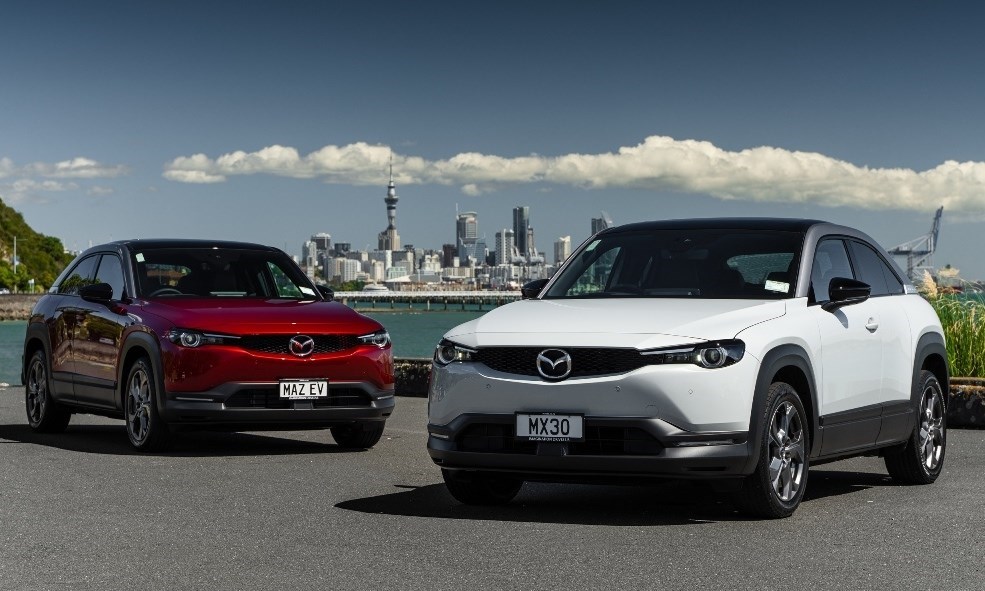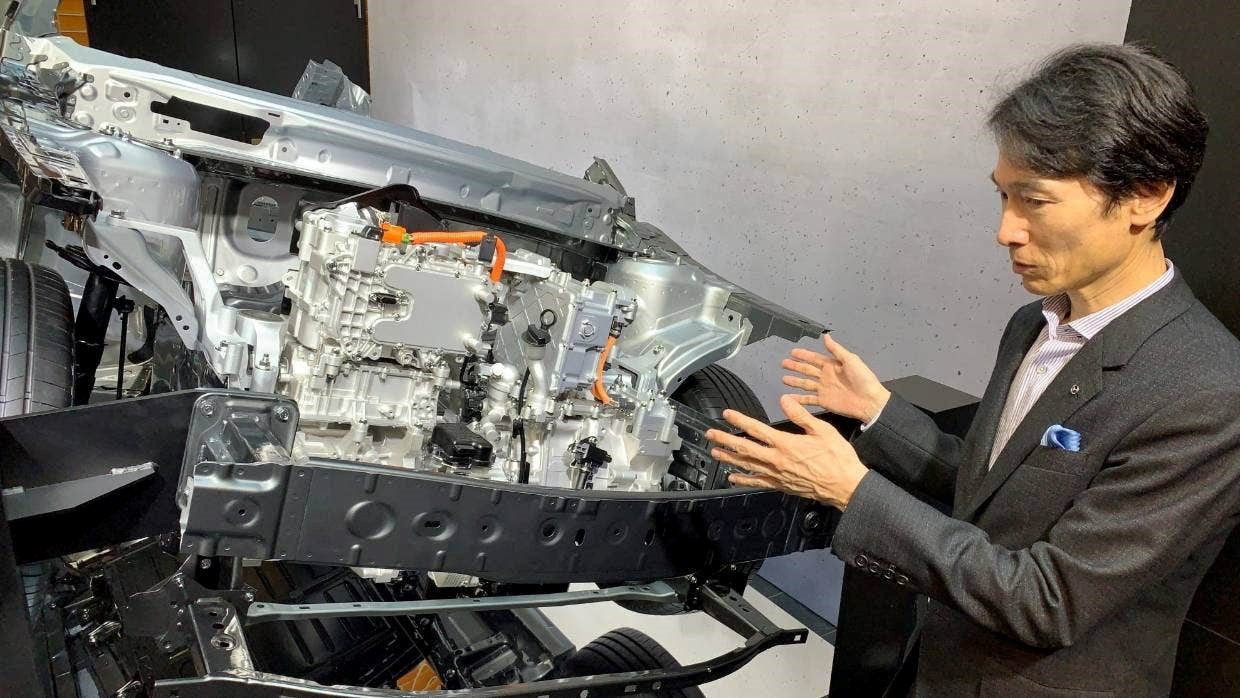Mazda will reveal a new plug-in hybrid powertrain for the MX-30 eco-car on Friday January 13, at the Brussels Motor Show (European time, Saturday for New Zealand). It will feature "an electric generator powered by a newly-developed rotary engine" - essentially a range extender, where the fossil-fuel engine helps to produce electricity rather than driving the wheels.
The company says the new powertrain is faithful to its "multi-solution approach to the global challenges of reducing greenhouse gas emissions" and even gets its own logo, a development of Mazda's traditional rotor symbol reshaped to form an "e".

And that's about it for detail right now, although Mazda has been signalling its intention to introduce this technology ever since it previewed the MX-30 platform and battery electric vehicle (BEV) technology back in 2019.
At a media event in Norway that year to drive the MX-30 technology prove-out vehicle (TPV), Mazda engineers explained the advantages of rotary for hybrid applications: it's light, quiet and well suited to running at constant speed. Rotary can also run on various fuel types without too much modification, including petrol, hydrogen and LPG.
Back in 2006, Mazda had petrol/hydrogen-powered EV-rotary RX-8 prototypes on the road and even leased a fleet of them to Norwegian company HyNor (which was working on a hydrogen fuelling network). It also dabbled with rotary range-extender versions of the Mazda2, with a tiny Wankel powerplant nestled under the boot floor.
While technical detail is still to come on the new powertrain, in 2019 Mazda was focused on developing its plug-in hybrid rotary in a variety of configurations to suit different markets.

"We like to make one technology really well, and then find different ways of applying it," said Hiroyuki Matsumoto, Mazda's executive officer in charge of vehicle development and product planning (pictured above).
"Rotary engine electrification is one such example. That's the focal point, but we can then make it into a generator or give birth to other types of technology. We look to answer one question and then have a wide scope of deployment."
The company also suggested an ideal template for the new technology would be larger-capacity batteries and smaller rotary fuel tanks for markets where charging infrastructure is widespread and electricity generation relatively clean (NZ would qualify on both counts), and smaller batteries with more reliance on hybrid/petrol power for countries where charging infrastructure is still developing.










